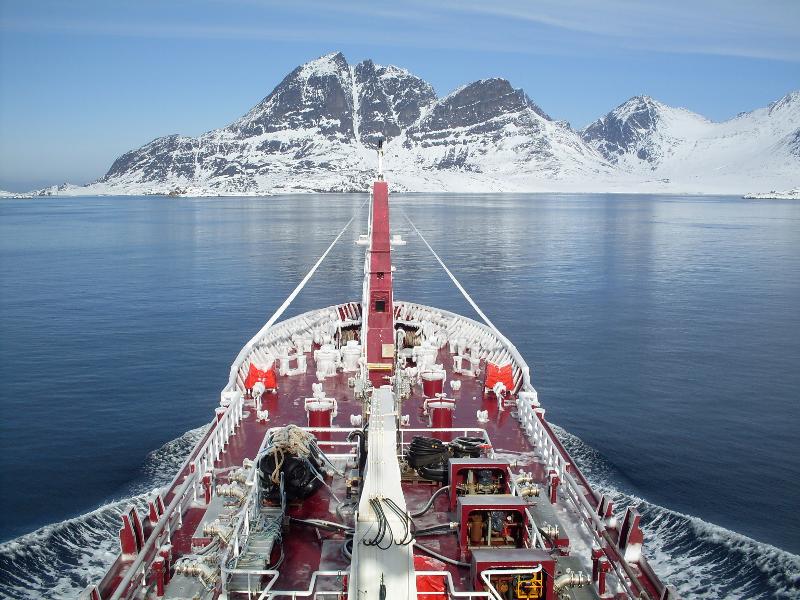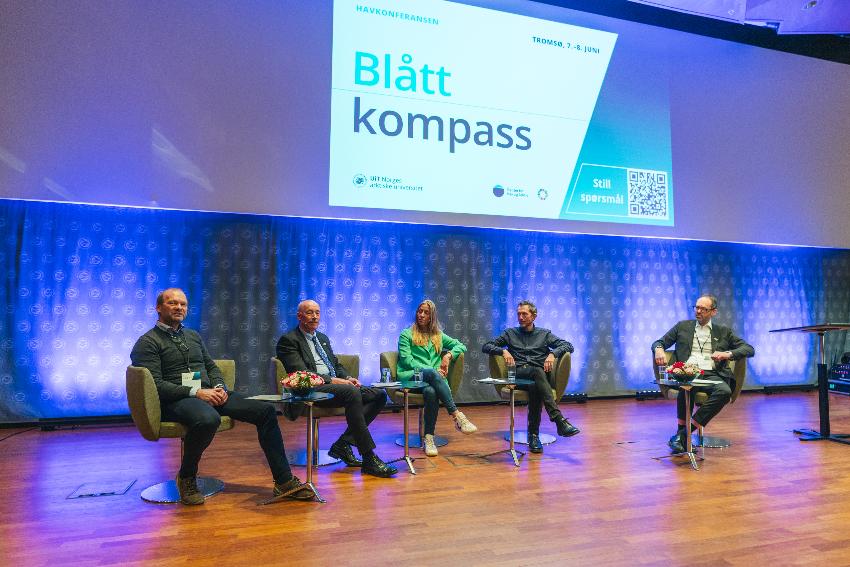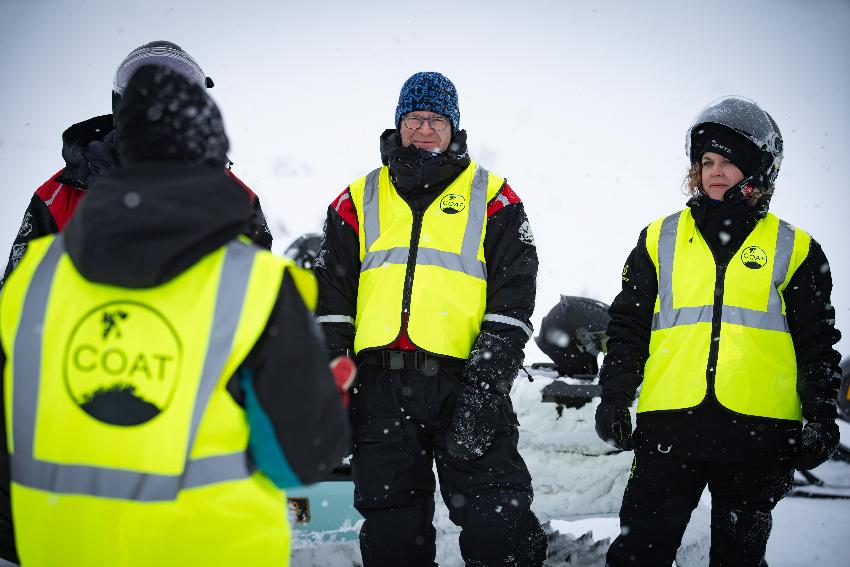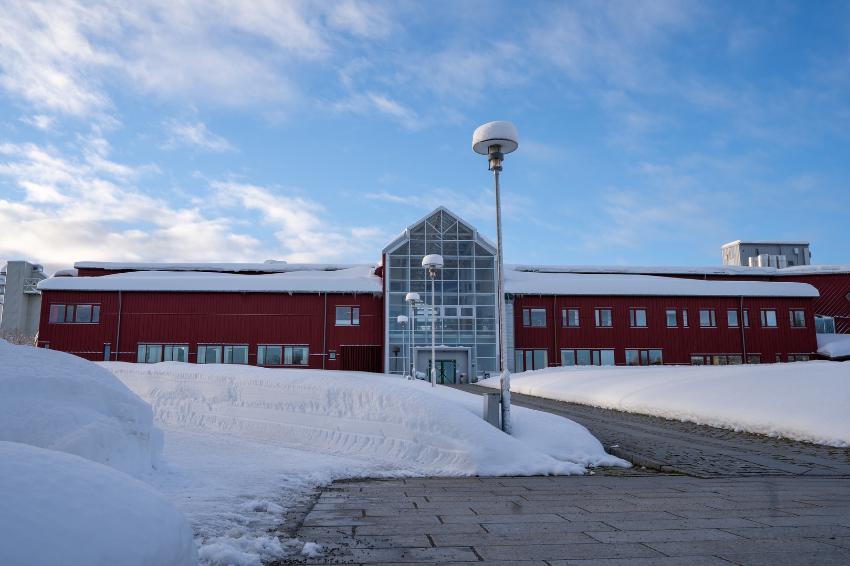Conference in Singapore resulted in book on Arctic Shipping
There is a lot of interest from Asian States to use these new, more efficient sea routes to Europe, but their interests often differ from those of Arctic coastal States. So how to govern shipping in the Arctic? How can user States and Arctic coastal States cooperate in this regard?
These are the questions addressed in the book, Governance of Arctic Shipping: Balancing Rights and Interests of Arctic States and User States, published by Brill in September 2017.
Joint effort of Norway and Singapore

The book is a joint effort of the K.G. Jensen Centre for the Law of the Sea at UiT- The Arctic University of Norway, and the Centre for International Law (CIL) of the National University of Singapore (NUS). A conference, which provided the basis for the book, was convened in Singapore on 10 and 11 December 2015.
The aim of the project was to examine the balancing of the rights and interests of Arctic coastal States on the one hand, with those of user States, in particular those of Asia, on the other hand.

- We believe that there are indeed some lessons from Southeast Asia that could be used as a model for establishing cooperative mechanisms in the Arctic, says Erik Molenaar, one of the co-editors and authors of the book.
External perspectives valuable
– It has an additional value to include other – external – perspectives in the research on the international legal regime for the management of the Arctic Ocean. The book project has also contributed positively to our cooperation with law of the sea researchers in Asia, which we intend to develop further. This is consistent with the agreement UiT just recently made with the National University of Singapore on research and educational cooperation and similar agreements to be entered into with Chinese universities.”, says Tore Henriksen, director of the K.G. Jebsen. Centre for the Law of the Sea at UiT, and co-author of the book.
Concrete example of collaboration
Rector at UiT, Anne Husebekk, who on behalf of the university has signed cooperation agreements with A*STAR and the National University of Singapore, is very excited to see this concrete expression of collaboration between UiT and researchers in Singapore.
– This book is an excellent illustration of the cutting-edge research being carried out at our KG Jebsen Centre and at our Faculty of Law in matters pertaining to Arctic shipping, and it shows the importance of close collaboration between the Arctic and Asia. The challenges being discussed in the book will also be central to the Centre for Ocean and Arctic Issues, scheduled to be opened in 2018, says rector Anne Husebekk.
Read also: SOS from the Arctic
|
More about the boook "Governance of Arctic Shipping: Balancing Rights and Interests of Arctic States and User States": Initial talks for a joint project on Arctic shipping were first held in the margins of a conference in Bergen in June 2014. The focus which eventually emerged, namely balancing the rights and interests of Arctic coastal States on the one hand with those of user States (in particular those from Asia) on the other hand, was especially fitting in view of the fact that the project is a joint effort by an Arctic and an Asian research centre. The conference, which provided the basis for the book, was convened in Singapore on 10 and 11 December 2015. Increased understanding between stakeholders From the book’s foreword, contributed by Ambassador-at-Large Tommy T. B. Koh, Chairman of CIL’s Governing Board, who served as the President of the Third United Nations Conference on the Law of the Sea (1980-1982): “The main objective of the Conference was to increase understanding among the Arctic States, user States and other stakeholders concerning the issues that must be addressed if the amount of shipping in the Arctic increases due to the receding sea ice. The presentations at the Conference helped stakeholders understand how other stakeholders viewed the issues, and provoked a lively discussion and exchange of views. After the Conference, the members of the editorial committee from JCLOS and CIL asked the authors to revise their papers to take into account the discussions at the Conference as well as suggestions of the editors." Co-editors and writers Three JCLOS staff members acted as co-editors of the book, namely Tore Henriksen, Kristine Dalaker Kraabel and Erik J. Molenaar. Three of the book’s Chapters were written by JCLOS staff: Chapter 2 “The Arctic, the Arctic Council, and the Law of the Sea”, was written by Erik J. Molenaar, Chapter 6 “Russia”, was written by Jan J. Solski, and Chapter 8 “Norway, Denmark (in respect of Greenland) and Iceland”, was written by Tore Henriksen. Also, Henriksen, Dalaker Kraabel and Molenaar co-authored Chapter 14 “Conclusions on Challenges and Prospects for Enhanced Cooperation on the Governance of Arctic Shipping”. Chapters: The Chapters in the book are organized as follows. Chapters 1 to 3 provide the background necessary for readers to understand the legal and institutional issues concerning the governance of shipping in the Arctic. In Chapter 1, Lawson W Brigham provides an overview of the changing maritime Arctic and new marine operations. In Chapter 2, Erik J Molenaar provides an overview of the legal and institutional framework governing Arctic shipping, with special attention to the Arctic Council. In Chapter 3, Dalee S Dorough outlines the rights, interests and role of the Arctic Council Permanent Participants. Chapters 4 and 5 are devoted to the role of the IMO. In Chapter 4, Aldo Chircop analyses the IMO and UNCLOS and their role in the governance of Arctic shipping. Finally, in Chapter 5, J Ashley Roach explains the Polar Code and its adequacy. Chapters 6 to 8 examine the rights, interests, positions and practice on Arctic shipping from the perspective of the Arctic coastal States. Jan J Solski analyses Russia, Donald R Rothwell analyses Canada and the United States, and Tore Henriksen analyses Norway, Denmark (on behalf of Greenland) and Iceland. Chapters 9 to 11 examine the rights, interests, positions and practice on Arctic shipping from the perspective of user States, with special reference to Asian flag States. In Chapter 9, Deukhoon (Peter) Han and Sung-Woo Lee examine the issues from the perspective of Asian flag States generally, and the Republic of Korea in particular. In Chapter 10, Guifang (Julia) Xue and Yu Long examine how the principles of equal treatment and non-discrimination apply to Arctic shipping. In Chapter 11, Kentaro Nishimoto examines the rights and interests of Japan in regard to Arctic shipping. Chapters 12 and 13 examine whether lessons learned with respect to the governance of shipping in Southeast Asia may be relevant to the governance of Arctic shipping. In Chapter 12, Robert C Beckman and Sun Zhen examine the cooperative mechanism for the Straits of Malacca and Singapore. In Chapter 13, Captain M Segar examines the Singapore experience in oil spill preparedness and response. The Conclusions are set out in the Chapter 14. In this Chapter, the editors summarise some of the major findings in the previous Chapters and make recommendations on the future governance of Arctic shipping. The recommendations are a result of discussions among the editors during and after the Conference on the future governance of Arctic shipping. These discussions focused in particular on the issue of whether some features of the Cooperative Mechanism for the Straits of Malacca and Singapore could serve as a model for establishing cooperative mechanisms on shipping in the Arctic. As will be seen in the concluding Chapter, the editors believe that there are indeed some lessons from Southeast Asia that could be used as a model for establishing cooperative mechanisms in the Arctic. Written by professor at JCLOS, Erik J. Molenaar. |



